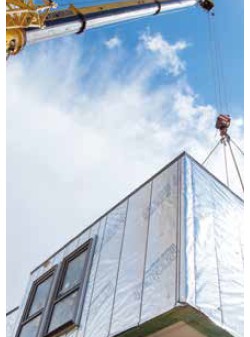James Morris, Managing Director at independent, project and cost management consultancy, Tower Eight explains why modular construction is relevant to the Private Rented Sector (PRS) and how it can support daunting housing targets.
To support its target of creating one million new homes by 2020, the UK Government wants to build more than 100,000 modular homes across the UK. This effectively means, that in just three years the government want to increase the current levels of modular homes by 55% - compared to the current supply levels of just 15,000 a year.
Increasing the supply of new homes for PRS is also a central tenet of the government’s strategy to hit these numbers. However, can the current modular delivery model support the supply of homes to the scale that policy makers hope for?
To support its target of creating one million new homes by 2020, the UK Government wants to build more than 100,000 modular homes across the UK. This effectively means, that in just three years the government want to increase the current levels of modular homes by 55% - compared to the current supply levels of just 15,000 a year.
Increasing the supply of new homes for PRS is also a central tenet of the government’s strategy to hit these numbers. However, can the current modular delivery model support the supply of homes to the scale that policy makers hope for?
From our experience of consulting on modular schemes, we would choose to highlight the efficiencies in the modular construction process that produce cost savings and increase speed to market. But from our perspective, there are also areas of the delivery model where there is an inherent risk, most notably at the preconstruction stage.
And, in our view, this risk has not been adequately recognised among the industry clamour surrounding modular and the optimism that it might deliver the scale of housing the country so desperately needs. The PRS has its own very distinct set of challenges and a very different financial model – so, we would ask the question, can modular construction methods deliver for the PRS?’
Modular construction may in many ways look more expensive, however, it is speed of delivery which provides the cost benefit. It is the savings on the programme, on the capital costs by scale where money can be made. In the case of Silvertown, East London, 850 modular homes are to be built as part of £3.5 billion regeneration of the area, with residents moving in as soon as 2020.
Modular housing should typicallyproduce a 10-15% saving on time – the earlier finish date allowing the scheme to generate revenue at a much earlier point in the lifecycle of a project than conventional construction methods on small to medium sized developments. This is where the key advantage lies.
To read full article, go to Offsite Magazine









